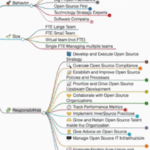MongoDB Find Multiple Conditions
This article explains we can define the multiple conditions within the find() function of MongoDB to restrict the number of records for the collection.
Read MoreThis article explains we can define the multiple conditions within the find() function of MongoDB to restrict the number of records for the collection.
Read MoreThe GhostBSD project develops a desktop operating system based on FreeBSD. The project’s latest snapshot is GhostBSD 22.06.15 which includes better handling of NVIDIA drivers and smoothly upgrade processes. “Some of the improvements are automation on …
Read MoreWhile working in databases, we use the WHERE clause to find out the duplicates within the table records, i.e., SQL and PostgreSQL discussed in this article.
Read MoreHas a webcam connected in your Linux PC or laptop? Here’s a graphical tool to configure the camera exposure, white balance, brightness, contrast, power line frequency, gamma, etc. It’s cameractrls, a new open-source tool that provides Python CLI and GUI (GTK, TK) to set the Camera controls in Linux. It can set the V4L2 controls […]
Read MoreCMake and CPack are helpful tools for generating configuration files, building, testing, and packaging projects. This article explains CMake and CPack.
Read MoreThis is on how you can turn off Incognito Mode. We covered methods for desktops, specifically Windows and macOS that made use of registry edits and commands.
Read MoreThis talked about PDFs that are opening in Chrome along with a quick fix. PDF was created in 1982 to give the world a reliable way to exchange documents.
Read MoreThe .schema query is used to define the tables in the SQLite database. This article explains SQLite Show the Structure of a Table.
Read MoreInsert, update, locate, delete, and aggregate operations performed on a time series collection. This article explains how to use MongoDB with time-series.
Read MoreTo organize data, we create groups to gather the same sort of data in one place. MongoDB group by multiple fields discussed in this article.
Read MoreSQLite is in auto-commit mode, which means it automatically creates a transaction with each command, processes it, and commits the changes to the database.
Read MoreOn LinuxAndUbuntu, we have discussed hosting WordPress, Drupal, Joomla, and other popular software on practically all major web server software. If you want to build a website on any web server, Web hosting is one of the most important components to start with. In this article, I will discuss some…
The post Cheapest Web Hosting Services 2022 appeared first on LinuxAndUbuntu.
Read MoreThe Kinit in Linux is a command often used for renewing or caching/renewing a Kerberos ticket authentication and granting features.
Read More TODO Group is proud to announce a new OSPO Mind Map version release. The mind map shows a Open Source Program Office’s (OSPO) responsibilities, roles, behavior, and team size within an organization. This post highlights the major improvements done by the community in this new version of the OSPO Mind Map.
TODO Group is proud to announce a new OSPO Mind Map version release. The mind map shows a Open Source Program Office’s (OSPO) responsibilities, roles, behavior, and team size within an organization. This post highlights the major improvements done by the community in this new version of the OSPO Mind Map.
The post OSPO Mind Map 2.0 release is out! appeared first on Linux Foundation.
The post OSPO Mind Map 2.0 release is out! appeared first on Linux.com.
Read MoreA hacker successfully managed to run Ubuntu on a Google Nest Hub (2nd Gen), say, what now?
The post Ubuntu Runs on a Google Nest Hub, Wait, What? appeared first on Linux Today.
Ubuntu is one of the most popular and widely used Linux distributions in the world, thanks to its user-friendliness, elegant and simple UI, and a large online community that provides support and solutions to common user problems. As a result, over the years, Ubuntu has become one of the most recommended Linux distributions for beginners. […]
The post The History of the Ubuntu Linux Distribution appeared first on Linux Today.
Read MoreSome of the most helpful Matrix clients, primarily for desktop (Linux, Windows, macOS), while also mentioning mobile and terminal clients.
The post 9 Best Matrix Clients for Decentralized Messaging appeared first on Linux Today.
 The energy sector is amid a huge transformation that will impact the entire world and grid operators need new innovations to match those needs, and modular grid automation is poised to help.
The energy sector is amid a huge transformation that will impact the entire world and grid operators need new innovations to match those needs, and modular grid automation is poised to help.
The post The SOGNO Project Wins Prestigious Award for Focus on Modular Grid Automation appeared first on Linux Foundation.
The post The SOGNO Project Wins Prestigious Award for Focus on Modular Grid Automation appeared first on Linux.com.
Read MoreArticle guide about Pandas in Python and its advantages, the DataFrame, and how to use Pandas to select multiple columns of a DataFrame using four options.
Read MoreYUM (shortcat for “Yellowdog Updater Modified“) package manager is responsible for managing the packages from the YUM repositories located on the server at /etc/yum.repos.d/. Here are ten must-know commands to get the most out of YUM.
The post 10 usefu…